Going toe to toe with mistletoe
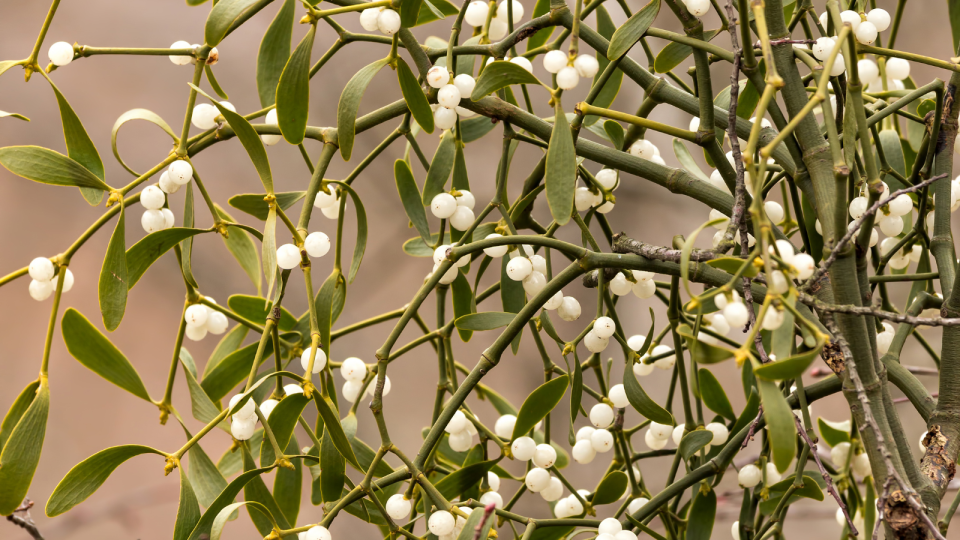
Did you know that mistletoe is actually a parasitic plant that can often spell bad news for its host tree? This may come as a surprise to some, but this is just one of many surprises mistletoe has to share with us!
More accurately, mistletoe is a hemi-parasitic, meaning it provides some of its own energy through photosynthesis whilst also parasitising off living trees. Unlike ivy, which gets all the bad press, it can weaken and damage trees, sending its tiny roots into the bark to take in water and nutrients. A mature tree can cope with a small amount of mistletoe, but if it spreads too much the tree may become depleted and be at risk of dying. In this case, the mistletoe can be managed so that both plants are kept healthy.
But as with everything in nature, mistletoe has its role in a healthy ecosystem. The berries are a major winter food source for birds, who also find the dense foliage useful for nesting. Studies have shown that areas where mistletoe has been cleared have a significant decrease in the populations of birds and other species.
There are over 1,000 species found throughout the world and they have evolved to plant themselves on hosts ranging from pine trees to cacti. In the UK we have only one mistletoe species, European mistletoe (Viscum album). It’s the species most commonly associated with European-based mistletoe mythologies (like kissing beneath it on Christmas) and is typically found on large deciduous trees.
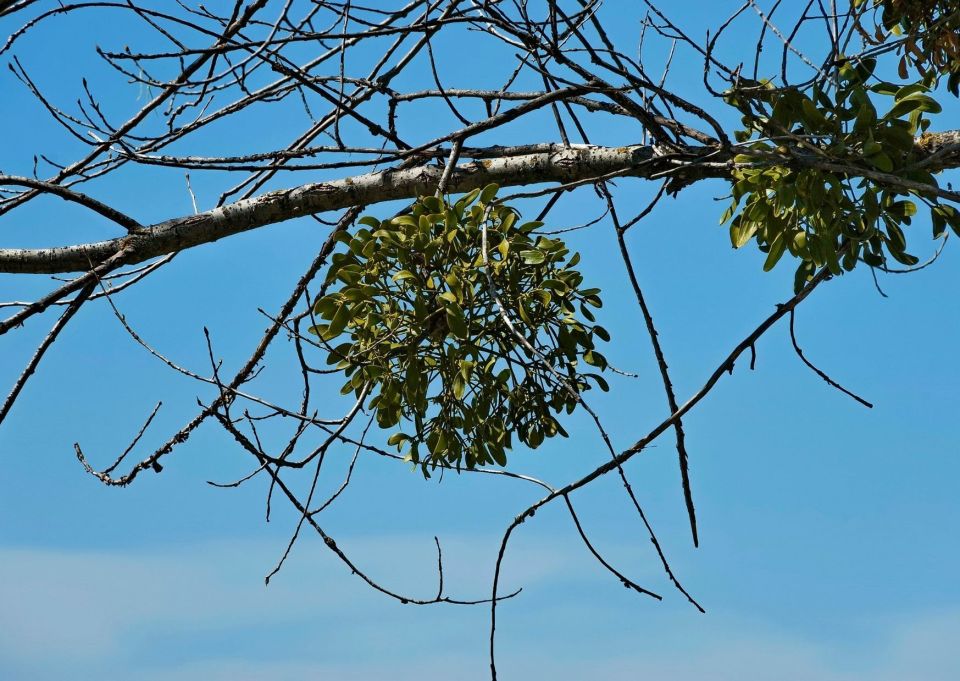
Dung twigs
So how do they get up there? The berries contain a very sticky substance called viscin which helps the seeds to stick to the branches. The berries are a favourite wintertime snack for birds, who help to spread them when they wipe their bills on twigs, or when they poo out the seeds on branches high up in trees where they roost.
This is also the source of its English name. 'Mistel', an Old English word for 'dung', and 'tan', a Proto-Germanic word for 'twig', were combined to create 'mistiltan', evolving over time to 'mistletoe'. Not the most romantic etymology!
A place for parasites
Both its name and its parasitic life may be making you wonder, how on Earth did it come to be connected to kissing? Don't worry, we'll get to that, for now, let's learn a bit more about the important role it plays in the natural world.
There are certain insects only found on mistletoe, as the mistletoe weevil and the mistletoe marble moth, who relies on this unusual plant to complete their life cycle. Its larvae overwinter in small mines chewed into the leaves of the plant, which become inflated by late spring when the larvae are fully grown. The larvae then emerge from the mines and pupate in a cocoon under bark or among lichens on the host tree.
The mistletoe marble moth is rare and needs conservation in the UK, its populations are declining. It is thought that the amount of mistletoe harvested poses a threat to the future of this already rare species.
If you’re not completely convinced about the value of mistletoe, it has benefited humans as well as wild animals. There is evidence suggesting some mistletoe species may be useful in the treatment of cancer – in some parts of the world it's been used for this since the 1920s. The theory is that mistletoe therapy reduces the side effects of chemotherapy, improving quality of life and helping patients better tolerate the treatment.
Fancy planting more trees?
We've been going for over 30 years, planting trees and greenery in towns and cities, but we can't do it without the support of nature fans like you. Whether you donate, come to a planting day or spread our messages over on social media - your support = trees.
Look up
Now is a good time to go in search of this wonder plant, but where to look? It can be found on a variety of host trees including apple, lime, poplar, sycamore, ash and hawthorn. Its strongholds include Wales, the West Midlands and the South of England, with particularly large populations in Gwent, Herefordshire, Worcestershire, Gloucestershire and Somerset. You can still find the odd bit of mistletoe hanging around in other parts of the country too, so worth keeping an eye out for it, even in built up urban places like London.
Despite growing on trees, mistletoe is not generally found in a woodland setting, preferring hosts in open situations with plenty of light. You’re more likely to see it in gardens, orchards, parkland and even churchyards.
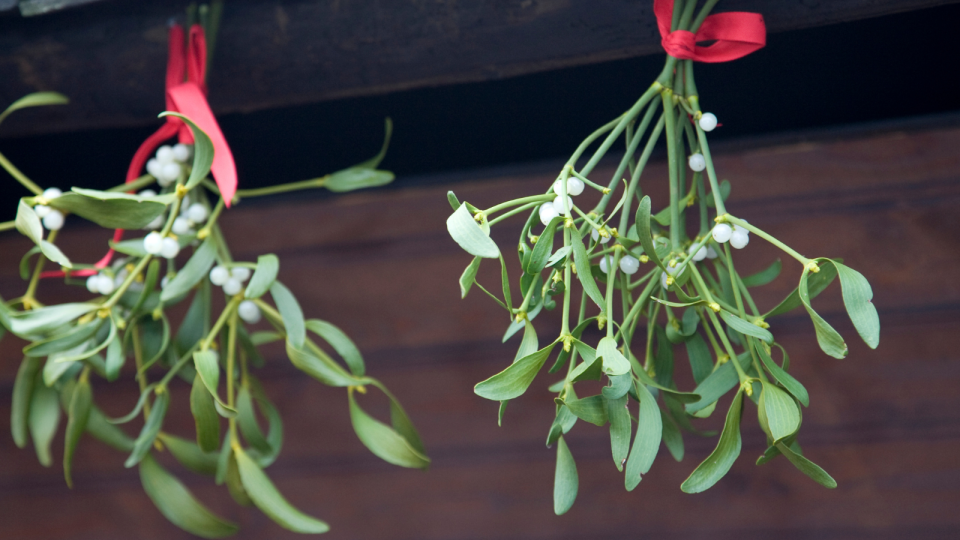
The kisstory of mistletoe
Mistletoe is steeped in folklore dating back to the 1st century AD, with roots in diverse cultures, including Druidic traditions, Norse mythology, and Greek legends.
It was often associated with vivacity and fertility, no surprise since it blooms during the darkest days of winter. In an ancient Celtic ceremony, Druids would climb an oak tree to fetch some mistletoe to make an elixir that was said to cure infertility.
Since at least the mid-19th century, Caribbean herbalists of African descent have called mistletoe "god-bush," valuing it for its spiritual and medicinal uses. In Nepal, various mistletoe species are prized in traditional medicine, especially for healing broken bones and treating infections.
In Norse mythology, mistletoe symbolised love and peace. The goddess Frigg, mourning her son Baldur's death from a mistletoe arrow, declared it a symbol of goodwill. She vowed it would bring only kisses to those beneath it, never harm again.
The UK tradition of kissing under the mistletoe is thought to have started in the 1700s, but it became much more popular throughout the 1800s. The Victorians especially became big fans of puckering up under the plant.
Mistletoe has been linked to so many stories and traditions over hundreds of years, and different people see it in different ways, and new traditions are still emerging. In 2004 the UK town of Tenbury Wells decided to start an annual mistletoe festival, crowning a 'Mistletoe Queen', as a way to protect their local landscape.
Mistletoe is not classed as under threat, but it is declining. Traditions are wonderful to uphold, so to celebrate with mistletoe this year, consider picking it from trees that have plenty of it rather than sparse sources. And as you're hanging it up, remember the steep history and rich folklore surrounding this iconic plant.
By Gurnam Bubber
Learn more surprises about well known plants
-
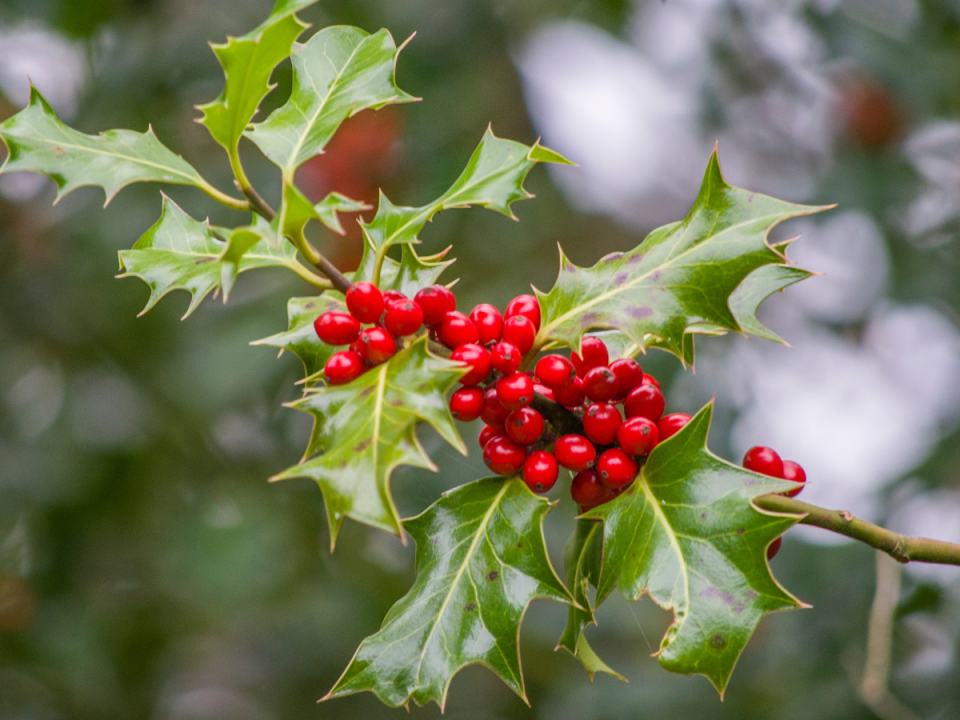
Intreeducing: Holly the magician
28 November 2025
Read on to discover how the holly tree bridges the gap between pagan rituals and modern celebrations, and provides a lifeline for wildlife during our coldest months.
-
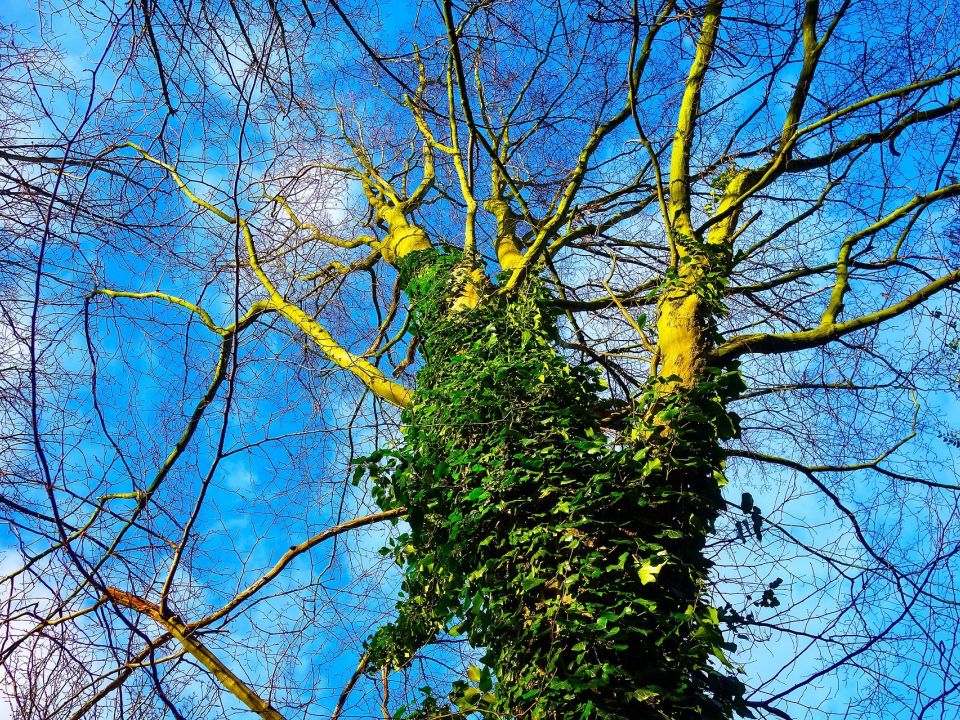
Does ivy kill trees?
2 September 2025
Have you ever looked at an ivy-smothered tree and wondered if everything's ok? We take a deep dive into ivy to answer the question - friend or foe?
-
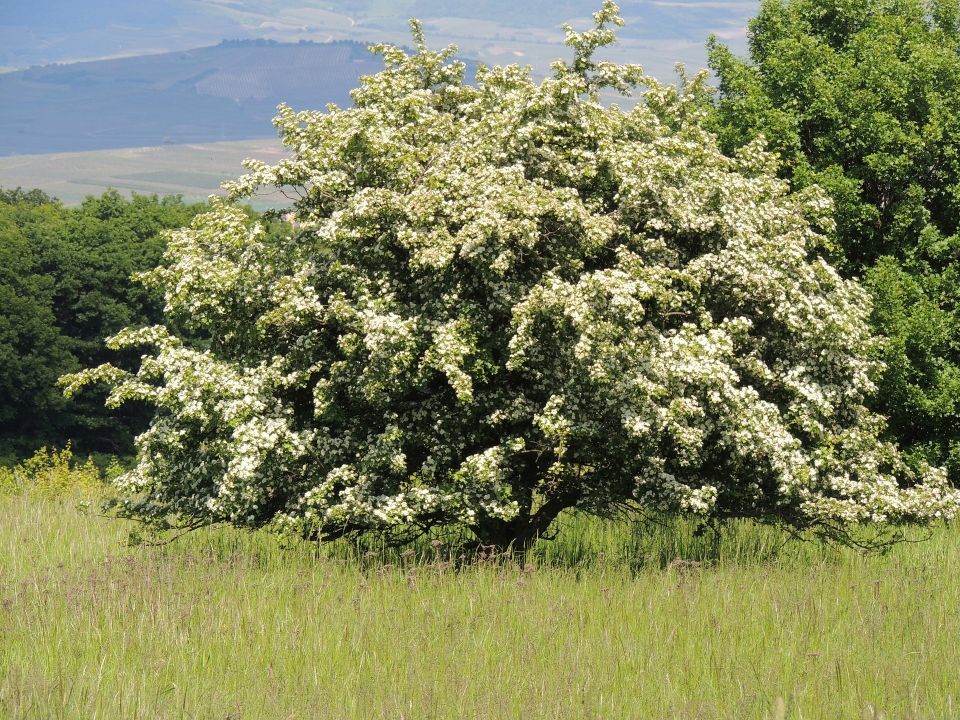
Intreeducing: Magical Hawthorn
27 July 2018
In our new series we take a closer look at the tree species we see around us every day, dig up their colourful past and look for secrets beneath their leaves. Meet the Hawthorn.
-
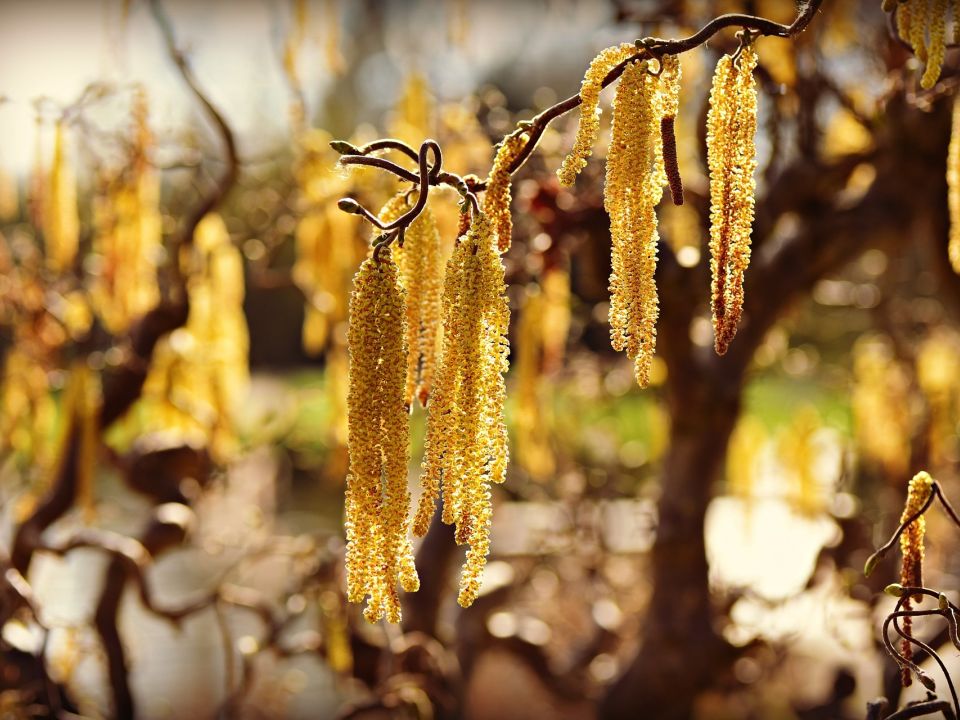
Intreeducing: the helpful hazel
9 March 2019
Although small and easy to overlook, that hazel has many powers, and is not one to be overlooked. Hazel is willowy, nutritious, crafty and has a fiery past.
-
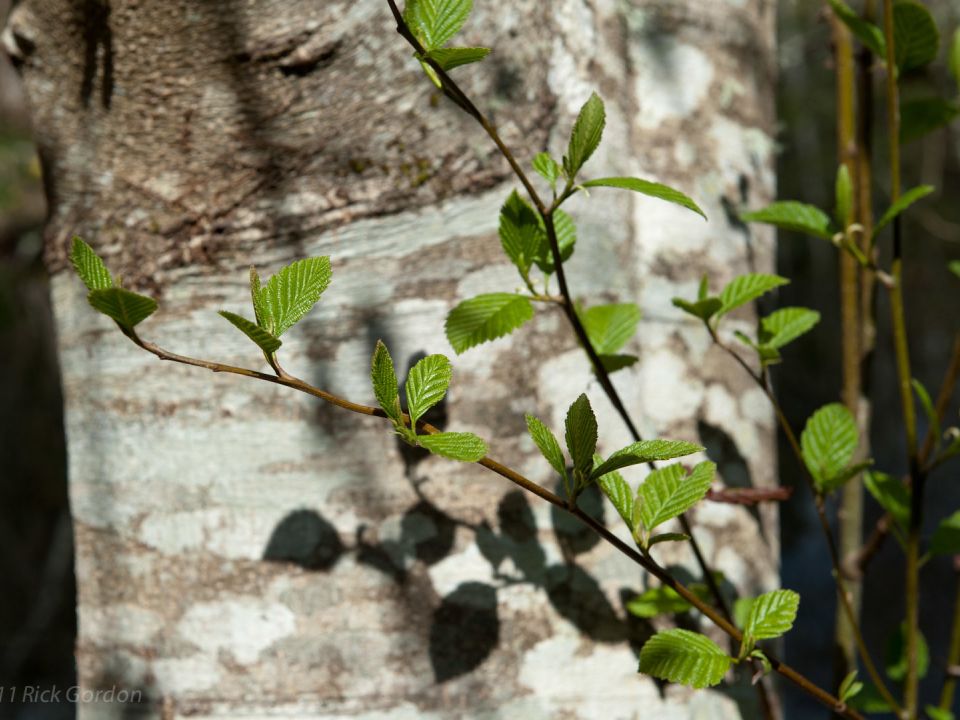
Intreeducing: the Alder – a super hero tree pioneer!
28 September 2018
The Alder is a pillar of the tree community, supporting the survival of other species, and providing shelter to animals and humans too.
Donate to Trees for Cities and together we can help cities grow into greener, cleaner and healthier places for people to live and work worldwide.
Donate